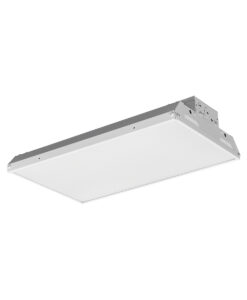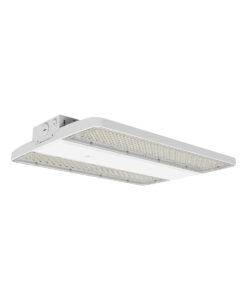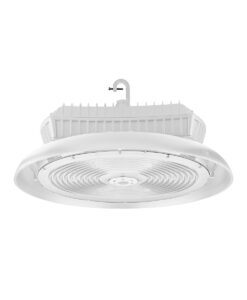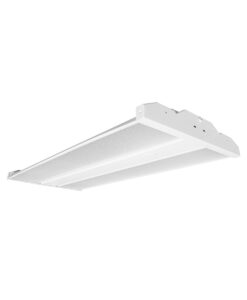At PacLights, we understand the critical role of proper illumination in industrial settings. Calculating foot candles for industrial lighting is a fundamental skill for optimizing workspace efficiency and safety.
This guide will walk you through the process, breaking down complex concepts into easy-to-follow steps. We’ll explore the factors that influence foot candle calculations and provide practical tips to help you achieve the ideal lighting setup for your industrial space.
What Are Foot Candles and Why Do They Matter?
Definition of Foot Candles
Foot candles represent a fundamental unit of measurement in industrial lighting design. One footcandle (fc) is a measure of illuminance, equal to one lumen per square foot. This measurement quantifies the intensity of light in a given area, which proves essential for creating safe and efficient work environments.
The Link Between Foot Candles and Lumens
To grasp foot candles better, we must explore their relationship with lumens. Lumens measure the total amount of light emitted by a source, while foot candles measure the intensity of that light at a specific distance. For instance, a light fixture producing 1,000 lumens will create 1 foot candle of illumination on a surface 1 foot away that’s 1 square foot in size.

This relationship plays a key role when selecting lighting fixtures for industrial spaces. The Illuminating Engineering Society (IES) provides guidelines for optimal foot candle levels in various industrial settings. General warehouse areas typically require 10-30 foot candles, while detailed assembly work might need 50-100 foot candles.
Importance in Industrial Lighting
Proper foot candle levels in industrial settings impact worker safety, productivity, and energy efficiency. The National Institute for Occupational Safety and Health (NIOSH) reports that inadequate lighting contributes to approximately 5% of workplace accidents.
In manufacturing environments, correct foot candle levels can reduce errors and improve quality control. A study by the Light Right Consortium found that optimized lighting can increase productivity by up to 8.5%. Moreover, tailoring foot candle levels to specific tasks can lead to significant energy savings. The U.S. Department of Energy reports that industrial facilities can reduce lighting energy consumption by 25-60% through strategic lighting design.
Practical Applications
When designing industrial lighting, consider the specific tasks performed in each area. A packaging area might require 30-50 foot candles, while a quality control station could need 100-200 foot candles. Use a light meter to measure existing foot candle levels and compare them to IES recommendations to identify areas that need improvement.
Achieving the right foot candle levels involves more than just installing brighter lights. It requires consideration of factors like fixture placement, light distribution, and the reflectivity of surfaces in the space. Dark-colored walls and machinery can absorb light, requiring higher lumen output to achieve the desired foot candle levels.
As we move forward, we’ll explore the step-by-step process of calculating foot candles for your industrial space, ensuring you can create an optimal lighting environment tailored to your specific needs.
How to Calculate Foot Candles for Your Industrial Space
Assess Your Space and Lighting Needs
The first step in calculating foot candles for industrial lighting involves determining the required light level for your space. The Illuminating Engineering Society (IES) recommends specific footcandle levels to ensure adequate illumination and safety for occupants. General warehousing typically requires 10-30 foot candles, while detailed assembly work might need 50-100 foot candles.

Next, measure the area of your space in square feet. For rectangular areas, multiply length by width. For irregular shapes, break the space into smaller rectangles, calculate each separately, and add the results.
Calculate Total Lumens
To calculate the total lumens needed, multiply your required foot candles by the area in square feet. For example, if you need 50 foot candles in a 1,000 square foot area, you’ll need 50,000 lumens (50 x 1,000).
Account for Light Loss
Factor in the light loss factor (LLF) to account for depreciation over time. The LLF typically ranges from 0.7 to 0.8 for LED fixtures. Divide your total lumens by the LLF to get the actual lumens needed. Using an LLF of 0.8, our example would require 62,500 lumens (50,000 / 0.8).
Apply the Foot Candle Formula
The foot candle formula is: Foot Candles = (Lumens x Number of Fixtures) / Area in Square Feet
Rearrange this formula to determine the number of fixtures needed:
Number of Fixtures = (Desired Foot Candles x Area) / (Lumens per Fixture x LLF)
Let’s say you’re using LED High Bay fixtures, each producing 30,000 lumens. For our 1,000 square foot space needing 50 foot candles:
Number of Fixtures = (50 x 1,000) / (30,000 x 0.8) = 2.08
Round up to the nearest whole number, so you’d need 3 fixtures to achieve the desired illumination.
Consider Additional Factors
While these calculations provide a solid foundation, other factors can influence your lighting design. The ceiling height, mounting height of fixtures, and reflectance of surfaces all play a role in the final illumination levels. In the next section, we’ll explore these factors in detail to help you fine-tune your industrial lighting plan.
You can also create a lighting simulation to calculate how many fixtures are needed for your space.
Fine-Tuning Your Industrial Lighting Design
The Impact of Ceiling Height
Ceiling height affects the number and placement of light fixtures. Higher ceilings require more powerful fixtures or a greater number of fixtures to achieve the desired foot candle levels at the work surface. A 30-foot ceiling might need high-output LED high bay fixtures, while a 15-foot ceiling could use standard output fixtures.

The mounting height of fixtures also influences light distribution. Fixtures mounted higher provide more even illumination but may require higher lumen output. Linear High Bays are designed to replace T5 or T8 fluorescent linear lights when looking for a one-to-one replacement of existing fixtures.
Surface Reflectance and Light Distribution
The reflectance of surfaces in your industrial space impacts the effectiveness of your lighting design. Light-colored walls, ceilings, and floors reflect more light, potentially reducing the number of fixtures needed. Dark surfaces absorb light, requiring more fixtures or higher lumen output to achieve the same foot candle levels.
Try to achieve these reflectance values when planning your lighting:
- Ceilings: 80% or higher
- Walls: 50-70%
- Floors: 20-40%
These values can help you optimize your lighting design and potentially reduce energy costs. Painting walls a lighter color could improve overall illumination without adding fixtures.
Choosing the Right Fixtures
The type and distribution of light fixtures you select affect foot candle calculations. Different fixtures have varying beam angles and light distribution patterns. A narrow beam angle concentrates light in a smaller area, while a wide beam angle spreads light over a larger surface.
Select fixtures based on the specific tasks performed in each area of your industrial space. Areas requiring high precision work might benefit from task lighting with a narrower beam angle, while general workspace areas could use fixtures with wider light distribution.
LED fixtures often offer adjustable beam angles, allowing for greater flexibility in your lighting design. This feature proves particularly useful in industrial settings where lighting needs may change over time.
The efficiency of the fixture itself impacts the number of fixtures needed. Higher-efficiency fixtures can provide the required foot candles with fewer total fixtures, potentially reducing installation and operating costs.
Meeting Industry Standards
Different industries have specific lighting requirements. For example, the food processing industry requires higher foot candle levels (50-100 fc) to ensure proper sanitation and quality control. Automotive manufacturing often needs 100-200 fc for detailed assembly work.
Consult industry-specific guidelines (like those provided by OSHA or IES) to ensure your lighting design meets the necessary standards. These guidelines often specify minimum foot candle levels for different tasks and areas within industrial facilities.
Adapting to Task Requirements
Task-specific lighting is essential in industrial settings. Assembly lines might require directional lighting to highlight specific areas, while inspection stations need high-intensity, glare-free illumination.
Consider using a combination of ambient and task lighting to create a flexible lighting system. This approach allows you to meet general illumination needs while providing focused light for specific tasks (reducing eye strain and improving productivity).
Calculating foot candles for industrial lighting creates safe, efficient, and productive work environments. This process enhances worker safety, boosts productivity, improves quality control, and can lead to significant energy savings. Proper lighting reduces accidents caused by poor visibility, minimizes eye strain and fatigue, and allows workers to spot defects more easily.

Complex industrial lighting designs often require professional expertise. We at PacLights offer comprehensive lighting solutions tailored to diverse industrial needs. Our team can assist with free lighting layout designs and ROI assessments to ensure you get the most efficient and effective lighting system for your facility.
Lighting is not a one-size-fits-all solution. Each industrial space has unique requirements based on tasks performed, ceiling height, surface reflectance, and industry standards. You can create an industrial lighting system that truly shines by taking these factors into account and leveraging professional expertise when needed.






Disclaimer: PacLights is not responsible for any actions taken based on the suggestions and information provided in this article, and readers should consult local building and electrical codes for proper guidance.